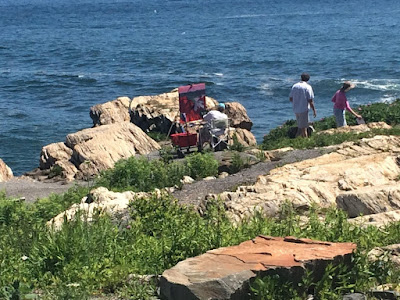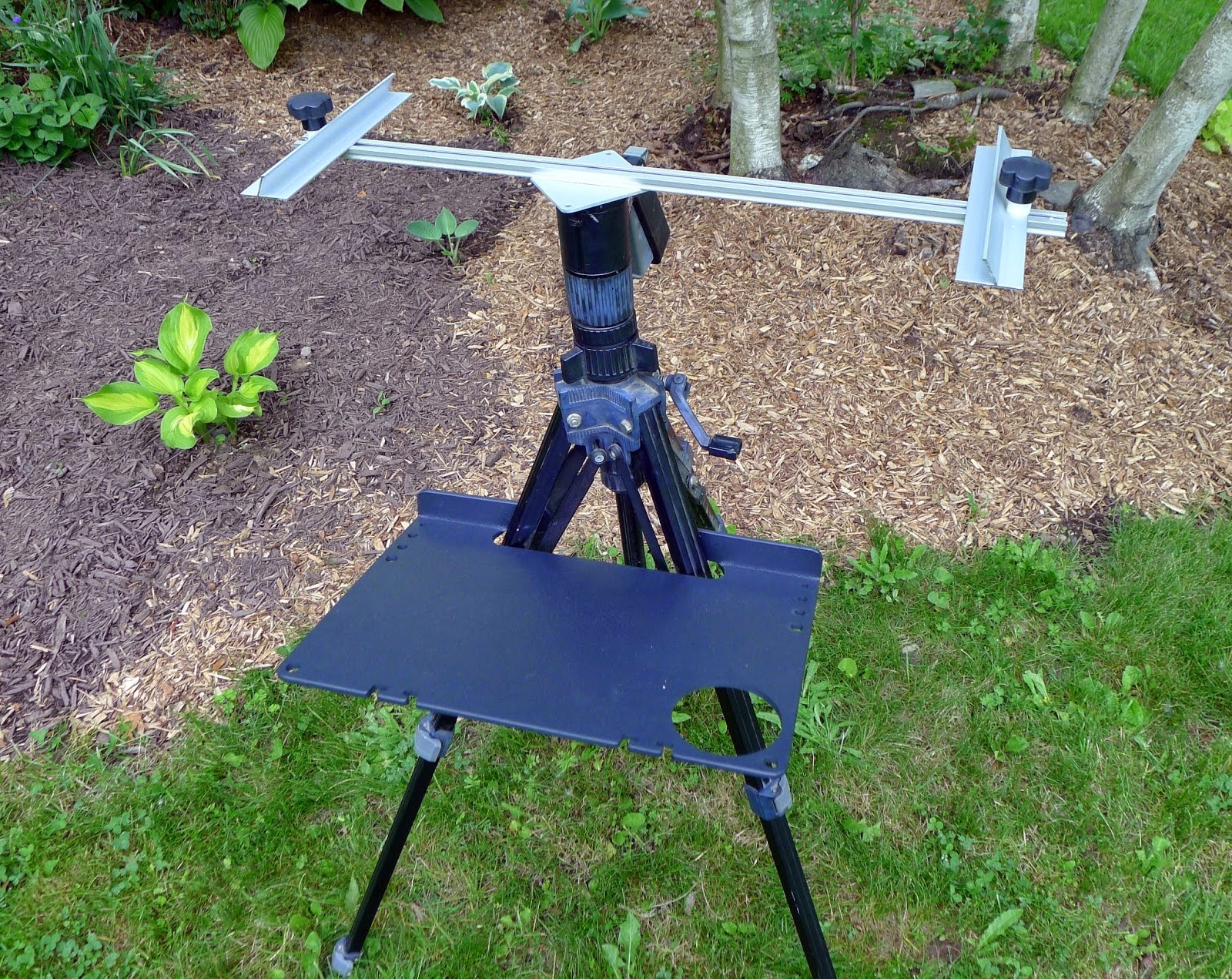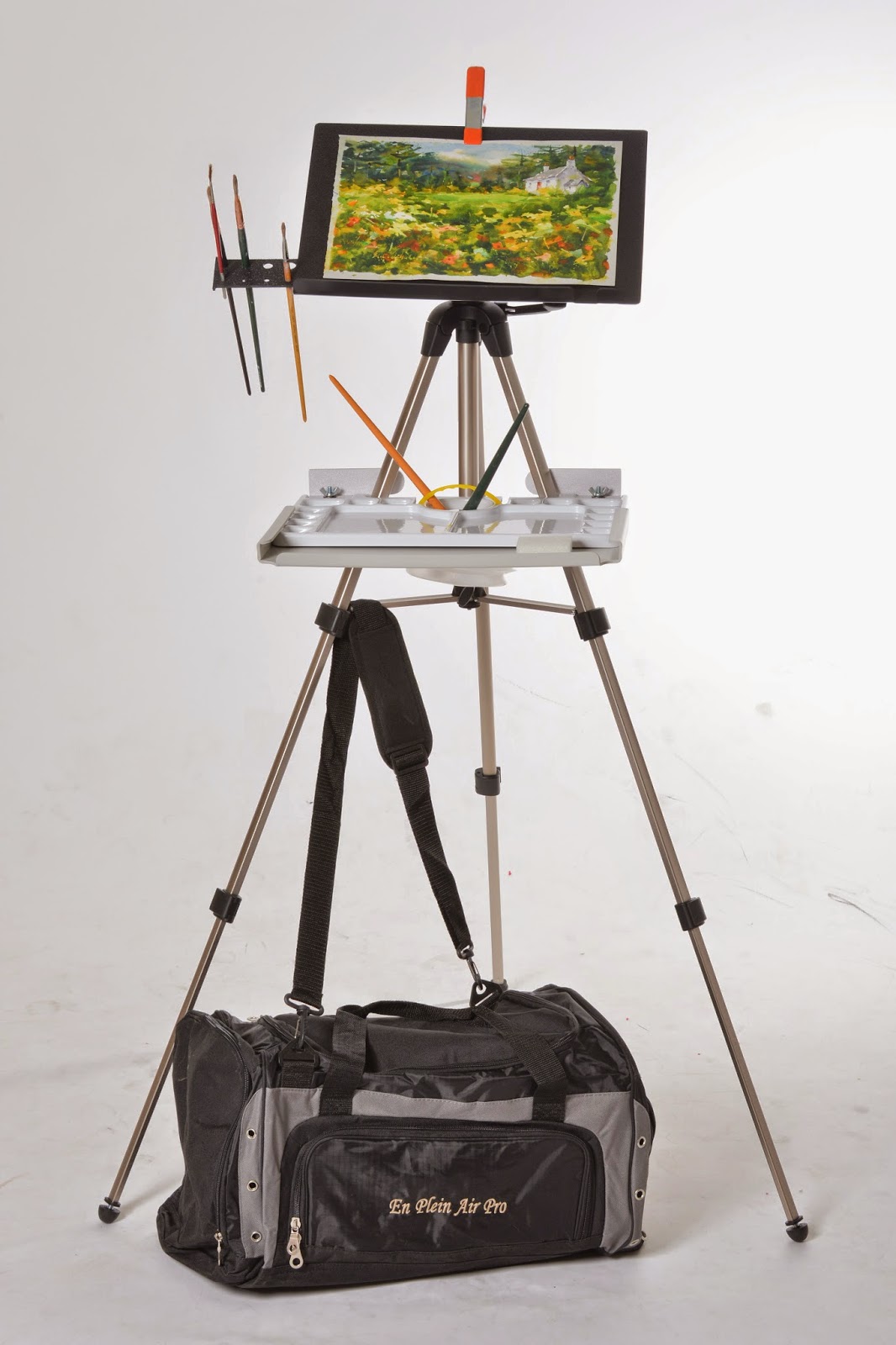My Mabef tripod easel is older than my Prius, which is why I recommend it so often.
 |
| Two demos require two easels. Still in the value-study phase here. Photo courtesy of Jennifer Johnson. |
I sometimes demo in watercolor and oils simultaneously, since I always have students in both media. I started as a way to kill time between watercolor layers. We all know how exciting it is to watch paint dry.
But it has another value, too, and that is to play up the intricate ways in which watercolor and oils are similar. We tend to focus on the differences, but we’re still working toward the same end in both media. That’s a composition that impels and compels the viewer.
There are challenges. Foremost is keeping the materials separated. I put the watercolor tools in one place (my chair) and the oil painting tools in another (my wagon) in the hope that I will not swish a watercolor brush through my Turpenoid or vice-versa. So far, it’s worked.
 |
| Whoops! That’s the first time I’ve ever done that! |
My students tend to watch these demos from chairs, not standing. That requires that I keep my watercolor paper on the vertical. It’s hard to get dark washes to stay where you put them, and sometimes I have to double-coat my darks. That creates an opportunity to talk up test marks.
Mentally, it’s a question of switching off one protocol and switching on the other. It looks reasonably seamless to the student, but I find that, halfway through my three-hour class, I’m pretty tired.
Dave Blanchard calls this a “hat trick,” and pointed out that in fact I’d done a triple demo yesterday, since I’d drawn the original scene in charcoal on newsprint. That was so my ‘thumbnail’ was big enough to be seen by the group. I don’t do that when working on my own.
This hat trick is just a way to expedite demos so as not to waste my students’ time. Out of context, it would just be a stupid party trick. But it had an unexpected consequence yesterday. That was my Mabef easel falling into the water.
 |
| David Blanchard rescued my easel while I Instagrammed the experience. I’m useful like that. |
I’ve never lost an easel in the ocean before, although I’ve tested the limits—on the deck of a moving boat, for example, or standing in the water in a rising tide.
I stood there looking at it while it floated below me, thankful that it wasn’t my oil-painting easel, which would have sunk like a rock. Fran Scannell ran to check if any dinghy owners had left their oars shipped, while Jennifer Johnson went for my hiking poles. Dennis Pollock found one of those mysterious plastic pipes that are always on fishing piers, and he handed it to Dave, who’d gone down the closest ladder. A moment later, my easel was back on land drying off. As you can see, I’m good in a crisis… for absolutely nothing.
 |
| And the easel went right back to work as if nothing had happened, while its dumb chum, my oil setup, stood around. Photo courtesy of Jennifer Johnson. |
This easel is about twenty years old. It’s seen a lot of hard use and travel. It’s cracked in several places and held together with duct tape. The carriage bolt no longer catches, making it hard to set up. But after its salt-water bath, it swelled up and was Supereasel again. It carried us right through the demo, and when I finished, it exhaled and fell over, limp.
“It’s dried out again,” someone noted.
I always recommend Mabef tripod easels as great value for money. They’re lightweight and versatile, able to lie flat for watercolor or stand up for oils. They now come with optional arms, which are a great feature. And now I know that they float patiently by the dock when you inadvertently drop them into the sea.






